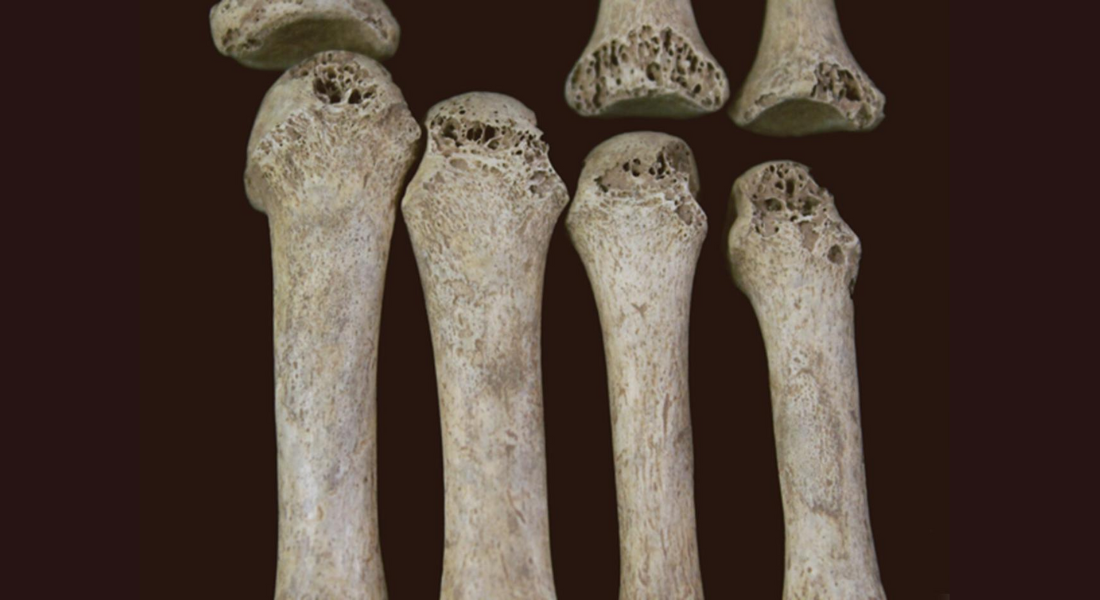Bones from ancient humans unveils health of people in the Middle Ages
An innovative approach opens avenues for studying immune responses in past populations. Could contribute to a broader understanding of human health throughout history.

With a new study published in the renowned journal iScience researchers can now answer those questions.
In the study they introduce an innovative approach to identify active infections in ancient human remains. Led by a team of researchers from University of Copenhagen and University of Zürich, the study delves into the efficacy of combined metagenomic and proteomic analysis to detect diseases, with a focus on leprosy.
"This research marks a significant advancement in palaeoproteomic methodology," says Assistant Professor at Globe Institute Alberto Taurozzi who is a senior author of the study.
Through detection of disease-associated protein biomarkers from ancient human remains, we aim to better understand disease dynamics across millennia and apply that knowledge to the present
"It not only expands our understanding of ancient diseases like leprosy but also opens avenues for studying immune responses in past populations, contributing to a broader understanding of human health throughout history," Alberto Taurozzi adds.
Leprosy, a disease with notable skeletal manifestations, serves as a prime case for exploring the potential of proteomics in ancient disease research.
Alberto Taurozzi and the rest of the team have developed a sequential-enzyme extraction protocol, employing trypsin followed by ProAlanase, to enhance the detection of non-collagenous proteins crucial for identifying immune responses associated with infections.
Immune proteins linked to leprosy
The study analyzed samples from individuals spanning the 11th to 18th centuries, comparing leprosy-afflicted individuals from leprosaria with those from non-leprosy-associated cemeteries.
Results demonstrated that the sequential digestion methodology successfully revealed immune proteins linked to leprosy in the former group, while individuals from the latter group and those analyzed using a trypsin-only protocol did not exhibit such proteins.
"Our method aims to uncover immune responses of ancient populations to infectious diseases, offering insights into the health of archaeological individuals. By reducing collagen peptides abundance, we successfully identified numerous host immune proteins associated with leprosy in samples from medieval leprosaria," says Ph.D from University of Zurich Shevan Wilkin, lead author of the study, adding:
“We hope that the development of this method will open a new avenue of research in to health and disease in the past.”
The findings underscore the potential of proteomics in complementing traditional DNA-based approaches in ancient disease research.
“Ancient DNA can show the presence of pathogens but it doesn’t tell us about the human response to infection. Our protein analysis may help us to identify remains of individuals with active infections. This is extremely useful as acute infectious diseases often cause mortality without any skeletal clues," says Liam Lanigan, postdoc at Globe Institute and co-author of the study and Alberto Taurozzi adds:
“Through detection of disease-associated protein biomarkers from ancient human remains, we aim to better understand disease dynamics across millennia and apply that knowledge to the present.”
Contact
Assistant Professor Alberto John Taurozzi
alberto.taurozzi@sund.ku.dk
+45 35 33 68 53
Journalist and press consultant
liva.polack@sund.ku.dk
+45 35 32 54 64
